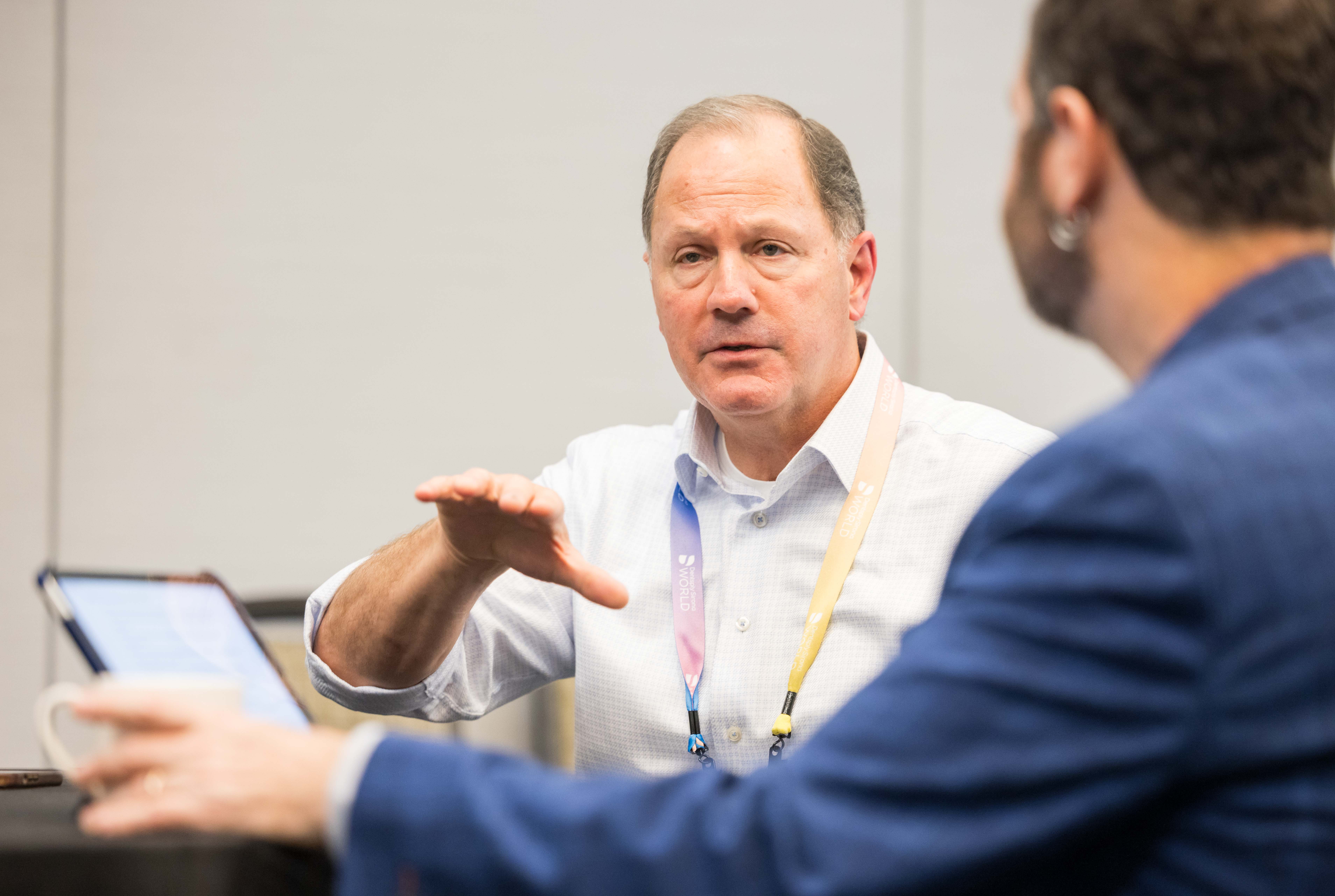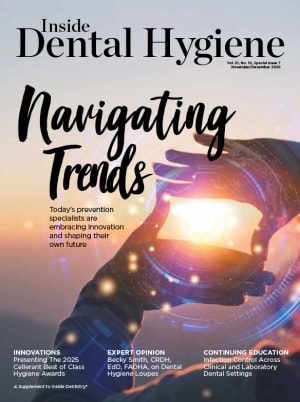When Dan Scavilla stepped into the CEO role at Dentsply Sirona, he brought with him decades of experience in global healthcare—and a clear eye on dentistry’s digital horizon. In this wide-ranging conversation with Conexiant Dentaleditorial director Noah Levine, Scavilla discusses his path from Johnson & Johnson and Globus Medical to leading the world’s largest diversified dental company, the opportunities he sees in AI and cloud technology, and how connected dentistry can help practitioners deliver care more efficiently while staying ahead of rapid industry change.

Dan Scavilla (DS): I worked with Johnson & Johnson in finance for 28 years. I moved through pharmaceutical, large and small molecule, consumer health care and a few med device companies. I left them about 10 years ago to become a public CFO at Globus Medical which at the time was about a $300 million publicly traded company. And as that grew, I took on greater roles, going from CFO to running all of operations, into becoming president of orthopedics, where I launched the trauma business and the joint business. It kind of evolved until about three and a half years ago when I became the CEO.
When I became CEO, one of our biggest competitors was in a certain situation. We moved quickly and acquired them, setting the stage to create the second largest spine company in the world and then utilizing all our skills that way. It was actually very successful.
So, in order to grow me personally, I began looking for board seats, and I joined the board of Dentsply Sirona. I was only on for a few months, but I really liked the people and I really was impressed with the products. I saw that change was coming, I said I was interested in joining in this role. I stepped off of the board, and became CEO about 2 months ago.
NL: Congratulations on the move. Obviously, you have lots of experience in the health care sector, but dental is kind of its own little pocket off to the side sometimes. What are your initial impressions now with about nine months or so experience on the dental side and 45 days at the helm of the company?
DS: I personally think the dental industry is friendlier. When speaking to people, whether dentists or DSOs, it's a very different, very open conversation, which is very refreshing for me.
There also are lots of similarities. You have a patient that you want to treat. You have implants to do. You need sterile equipment, instruments. You need planning, all those things. So it's not a foreign concept. I would even venture to say 80% of it comes from the same concept of “I analyze a patient, I set up a plan, I treat them, I follow up”. It's all in there. It's just a different part of the body. It's also interesting to watch the industry itself. I think there is a shift occurring here, whether it be competitors coming in quickly, or the fast evolution of DSOs. It's certainly an evolving market, and I think it’s occurring at a quicker rate than my past one.
NL: What from your past experience do you think is really going to be valuable as you take over and lead this company?
DS: That’s a great question. What's neat about this is the fact that, regardless of the change people have teeth and will need treatment for as long as there are people. That's a great way to kind of consider this. If you ask, “What do you bring from your past?” It's simple. The entire world is moving to digital and will continue to do so at an accelerated pace. And we did the same thing. In my previous position, we went from selling spine treatments, a pedicle screw, an implant - everything was different and separate – into the whole proceduralization of the spine industry. And that's what we talked about here.
I believe that CEREC on DS Core is almost understated at what its impact will be to the state of dentistry over the next several years. This is one of the biggest things that the company has done since launching CEREC. And I am certain that the industry will realize that. Some do now. So, taking that and capitalizing on that to shift and making how patients are treated more efficient, is really what I see coming in.
NL: In terms of the trends, we've touched on technology, obviously. Are there other things that you're seeing in the dental industry in your early days taking charge here that are going to kind of drive strategic priorities for where you want to take Dentsply Sirona?
DS: I do. One of the most transformative trends we're seeing is the shift to cloud-based ecosystems, which opens the door to integrating advanced technologies like artificial intelligence. This allows for enhanced imaging capabilities— Beyond just digitizing workflows, AI can play a pivotal role in improving diagnostics, streamlining treatment planning, and even offering data-driven treatment proposals. While these proposals would always support, not replace, clinical judgment, the potential to elevate patient care through smarter, more connected tools is incredibly exciting.
NL: The theme of connected dentistry is at the heart of Dentsply Sirona World 2025, and it seems like that's the heart of what Dentsply Sirona is looking to do. How do you get more dentists to really take the steps to digitize their practices?
DS: It’s one of those things that will occur over time. It’s as simple as “who needed a smartphone?” when they were first introduced, and now how can you live without it. That wave will occur. It's just technology. And we can make it easier to enter the technology space. We can have better training to help shape the curve, but the truth is the curve is going to happen anyway. It's just the nature of how these things occur. Our advantage is we can get you in early enough to benefit right away, so it becomes a competitive advantage for your business to do this.
NL: Dentsply Sirona is the largest dental company globally with the widest breadth of products in the industry. How do you balance all the different areas of a company like this and try to stay ahead of things and continue to set the pace?
DS: The good news is that by continuing to focus on digital innovation and proceduralization, we’re driving impact across the entire spectrum from the general practice to every specialty. The ability to seamlessly link those verticals can become very enticing, especially as general practitioners tend to do more.
When it comes to managing a company with such a broad portfolio, you can certainly operate each business area independently and still maintain a strong presence across the spectrum. But the real strength lies in harnessing the collective power of our offerings. This integrated approach becomes a major advantage when engaging with DSOs or other large organizations. Ultimately, it’s about tailoring that strength to meet the specific needs of each customer segment, and that’s where we can truly differentiate ourselves.
NL: What are your thoughts on Dentsply Sirona World and what do you think this type of event means for the company?
DS: It's been fabulous for me to connect to you, to other people, to dentists, and DSOs. Everyone coming together and refocusing, is a great thing, especially as we leave here and go out and treat patients. Let's make sure that this really does carry a post-meeting momentum that matters.
NL: If we were to, you and me, sit down 5 years from now, what achievements would you hope that you could point to over sort of the next five years for Dentsply Sirona?
DS: I will tell you - because of my nature, I'll never be satisfied with where we are. We won't grow fast enough, but I think 5 years from now, we will certainly be a much larger company by having penetrated the market by capitalizing on our technology and our proceduralization.
I want to introduce new technologies that can be amazing to not only dentistry. And I want to show everybody that we did the right thing, and that thing is to become a powerful player in the industry.
